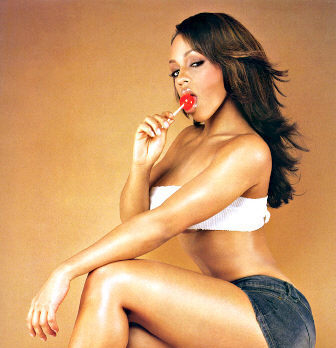
Scarborough-born Video Model Melyssa Ford
On March 13th, a black exotic dancer was allegedly gang-raped and verbally assaulted with racial epithets while performing at a private party for Duke University’s Lacrosse team. According to NBC, as she and another dancer, also black, performed, the players began to taunt them with racial slurs. The women quickly left the house and got into their car to leave, but one of the women returned to retrieve her shoes that she left in the house. Three of the players grabbed her, forced her into a bathroom, raped and sodomized for 30 minutes. She later checked herself into the local hospital for medical treatment.
Crying, one of the women called 911 and reported the incident.
As for the dancer, none of the players have been formally charged, as they are waiting for DNA tests to prove whether the complaints are valid. The lone black Lacrosse player on the team and at the party did not have his DNA taken for examination, as the dancers said that their attackers were all white.
Jason Bissey, who lived next door, sitting on his front porch, witnessed the entire situation. He did not call the police.
These types of situations have been commented on, the glaring inequalities in the reporting of missing white women versus women of colour. In this case, the time that it took for the police to investigate the complaint from the victim, which was approximately two weeks after the incident, brings up the question of not only the validity of the complaint by the police and administrators at Duke but also the issue of race. One is asked to question - because racial slurs were emitted during the time of the crime - if the woman was white, would the police have acted upon the complaint within a shorter frame of time? If the woman was a fellow student instead of an exotic dancer (who just so happens is also a college student), would her complaint been taken more seriously?
What is the worth of the black female body?
When I was a wee little girl growing up in the '70s on the outskirts of Kingston, Ontario, it was common to be teased and taunted because of my full lips and backside. One classmate, in particular, would walk around the classroom, lips exaggeratedly pursed, hunched over with his non-existent rear end jutting out, while the rest of the class laughed at me.
|
|
As a teenager, my slim and trim older sister commented on my butt, saying that I would be attractive “if it weren’t for my large ass.” In my young and naïve twenties, I dated a number of white men who, I later found out, just wanted to sleep with a black girl (and yes, they admitted it). |
In “Modern Day Hottentots,” Popmatters.com writer Mark Reynolds discusses the hyper-sexualized images of Black women in media, courtesy of Canadian - born ‘Video Vixen’ Melyssa Ford, Karinne ‘Superhead Steffans and ‘Buffy the Body’ (anyone seeing a trend here?) and how these women have been using their bodies in order to establish a career in the entertainment industry. But how successful are they? Well, Steffans is known for her book, which was previously reviewed on AfroToronto, where she, in graphic detail, accounts for her sexual exploits with several well-known celebrities. Ford is a regular centrefold in black men’s magazines, and Buffie the Body is a regular in Hip-Hop videos – which ones, I couldn’t tell you.
Using the juxtaposition of the modern-day ‘Vixens’ with the tragic and disturbing story of Sarah Baartman, who was known in the 19th Century as the “Hottentot Venus,” Reynolds compares how the objectification of black women’s bodies has remained quite similar. Baartman, who was born in South Africa and as a slave and eventually transported to London and later to Paris, was revered for her extremely large behind on her tiny, 4 foot-7 frame. Forced into a cage, scantily dressed and demanded to sing and dance for the public, she quickly became a legend among rich Londoners.
When she died in 1816, Reynolds writes, “Instead of being given a proper burial in France or her native land, Baartman was preserved like a prize specimen, remaining on display for another two centuries at Paris '' Museum of Natural History. The exhibit included a life-size statue, her preserved brain, and a wax model of her genitals. These were offered as proof positive, according to the scientific community of the 1800s, of the genetic inferiority of African people. It was not until 2002, after years of awareness raising and diplomatic wrangling, that Baartman''s remains were remanded to South Africa for a long-delayed, fitting memorial.”
Obviously, Video Vixens believe that they are in control of their own bodies, using them to catapult their careers. But are they? By the current ‘incident’ at Duke, saying that they were would be a stretch of the imagination.
Regardless of the profession, some black women choose to make their livelihood, our sexuality is not perceived as the sensual and attractive form of Lopez, and it is certainly not respected. While the victim, in this case, was a student who danced to put herself through college, we must be realistic about how we choose to portray ourselves and our bodies in a public forum, not in regard to the morality point-of-view, but for our safety as women of colour. In this case, and other unreported assaults, loving and appreciating ourselves and our bodies is one thing, but if the outside world does not, there is no guarantee that our pleas for help will be acted upon by the authorities.
But while he didn’t call the police, Jason Bissey, the next-door neighbour of the Duke Lacrosse team did remember this: “When I was outside, one guy yelled at her, '... Thank your grandpa for my cotton shirt.' "


